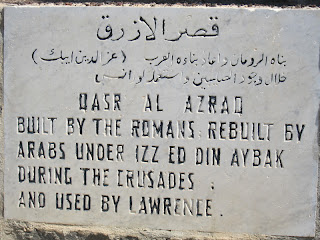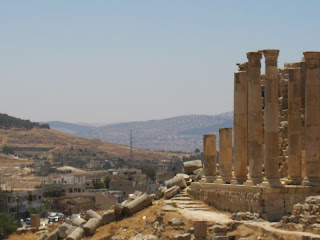Some may say that. That's ok. Some people prefer beer, others wine.
I say that all one needs is a sense of imagination, and wonder. Things that sometimes are diminished to some extent as we move from childhood to adulthood.
And of course a sense of history, where we came from, what they have witnessed over the centuries, the challenges in building these "old stones", and appreciating that they still stand in some form after 1000 to 2000 years.
Yes we also have other "old" forms of art we appreciate, Da Vinci's Mona Lisa, Mozart's music, then of course the "old" architecture (including the "less old" Notre Dame or the Eiffel Tower in Paris), and the stories that they could tell, if they could. What evidence will the CN tower, or other buildings we erect today, have left behind in a similar time frame going forwards? Yes just "old stones" in some minds?
We need that sense of imagination & wonder when we stand in their presence, and just "be there", taking in the moment, and just imagine, and imagine some more. Then they come alive.
Jordan is a country full of these "old stones", and so the journey continues.
North of Amman, sitting on a mountain top, is a castle at Aljun.
It is one of the best preserved medieval fortified structures in Jordan, built about 1100 AD by the Arabs, and never conquered by the Crusaders in their quest to capture the Holy Land. But captured and partially destroyed subsequently by the invading Mongols (Ghengis Khan and his hordes on their way to Europe).
The castle sits on the mountain top in the middle of the picture.
In the foreground are many Olive trees, growing like weeds in this part of the world, as in many Mediterranean countries. Interestingly inside the castle with the thick stone walls it was quite cool, despite the heat outside in the sunshine - medieval air conditioning.
The above site was North of Amman - we were to set out going East, where the borders of Iraq, Syria, and Saudi Arabia were quite close. With the present ongoing military conflict in Syria, and knowing that some people were escaping the country through Jordan in this vicinity, as well as the continuing instability in Iraq, added a flair for the unanticipated. Fortunately all was peaceful.
We headed out to the area of the so called desert castles, some as fortifications, some as "vacation" spots of the rich from Damascus a thousand years ago, and one as possibly an ancient "inn" at some point.
In this area to be explored we were quite close to several "hot spot" borders as can be seen from these road signs at intersections we came across - our driver assured us he didn't want trouble either - comforting?!
The first "desert castle" was Qasr Al-Azrac, built originally by the Romans about 300 AD, then expanded by the Arabs during the wars with the Crusaders, and apparently a base for Lawrence of Arabia (a Brit) during the winter of 1917 during his role in supporting the Arab uprising against the remains of the Ottoman Empire. After the war ended Britain, France and Russia divided up this part of the Middle East to establish the present borders (Israel, Lebanon, Jordan, Syria, and Iraq) for better or for worse in light of the present politics of the region. The politics of Imperial Powers.
The next desert castle was Qusayr Amra, originally built by the caliph of Damascus about 700 AD as a place for "restoration and diversion" (or "cottage" in our world!). Its structure is an example of an early phase of Islamic art, as applied to architecture. This same caliph was also responsible for the building of the spectacular Great Mosque of Damascus. Although sitting in an arid desert landscape at present apparently there were lush surroundings at the time it was being used. Aside from having a "bath" (inspired by the Romans) the walls and ceilings were covered with a number of frescoes.
The last "desert castle" we visited was Qasr Al- Kharana. Originally a Roman building, subsequently rebuilt by the Arabs about 700 AD, believed to be built as a sumptuous residence for the caliph or maybe subsequently as an Inn for travellers moving between Damascus and the Holy Land.
Our final exploration of "old stones" in Jordan takes us back in time, two thousand years and the early Christian era again.
We are to visit Jerash, believed to be the largest and most well preserved site of Roman architecture in the world outside of Italy (although an argument could be made for the site at Ephesus in Turkey).
It also has the longest series of columns still standing of any Roman city.
The images portray the size of this site from antiquity. It is still being excavated, noting archeologists on site during our visit. Unlike the Parthenon in Athens we were able to wander freely amongst the "stones", to get a true feeling of its expanse and scope at close range.
That takes us to the end of our "voyage through old stones".
But our imagination remains vivid, as an integral part of our life journey.
Indiana Jones could have been here.
......


















































